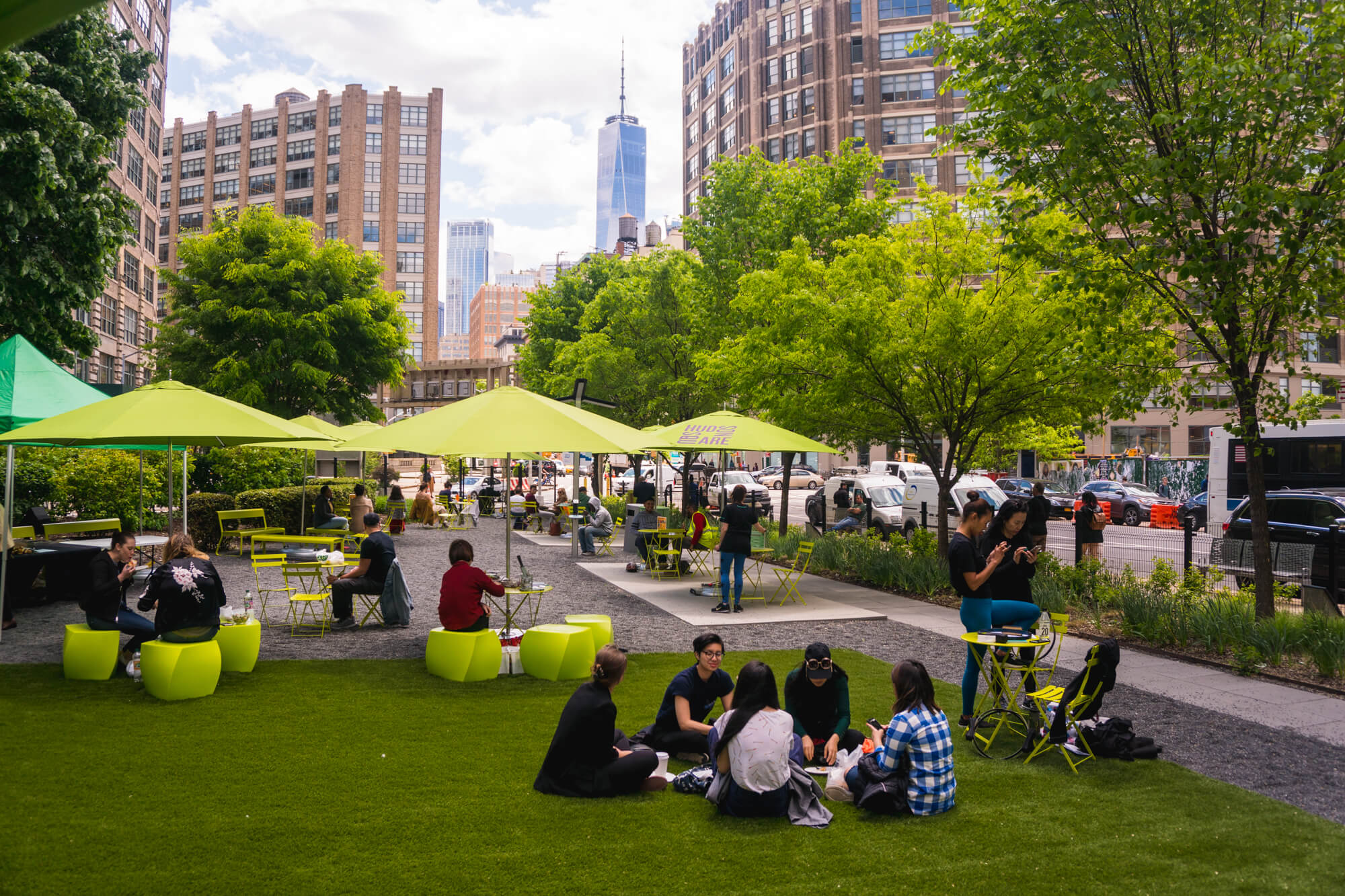Freeman Plaza.
Photo courtesy of Hudson Square Business Improvement District
Just 15 years ago, Hudson Square was a concrete jungle, notorious for the cars lining up at the entrance to the Holland Tunnel. At the time, a small sliver of brick and concrete at Spring Street and Little 6th Avenue, dotted with a few trees, represented the sole open space in the district. But the Hudson Square Business Improvement District had a vision to change that. They saw the potential for two underutilized parking lots at the mouth of the Holland Tunnel, owned by the Port Authority of New York and New Jersey, to be transformed into public parks.
Critics thought the idea was absurd. Who would want to sit at the entrance of a tunnel, surrounded by vehicular traffic? Turns out that done right, thousands of people will do just that.
This May, the BID celebrated the 10th anniversary of that transformed space. Along with Freeman Plazas West and East, these award-winning green spaces took the underutilized lots and turned them into public spaces featuring plants, art installations, games, and seating. They are a buffer to the tunnel traffic and provide an unexpected oasis from the noise and congestion all around. Yet, in the 10 years since these plazas opened, the neighborhood still falls well below the city’s goal of 2.5 acres of public space per 1,000 residents. More open space is possible — but only if we agree to prioritize space for open air and greenery. A City-owned vacant site at Hudson and West Houston Streets presents us with one such opportunity.
Creative development of the public realm gives workers, residents, and visitors access to unique public spaces. As our city evolves, underutilized or outmoded spaces, like industrial areas and parking lots, should be repurposed to serve the changing city. Public spaces don’t have to be covered in grass to be enriching if they’re designed with people in mind. New York City has been a pioneer in adaptive reuse — we…
Read the full article here

Leave a Reply